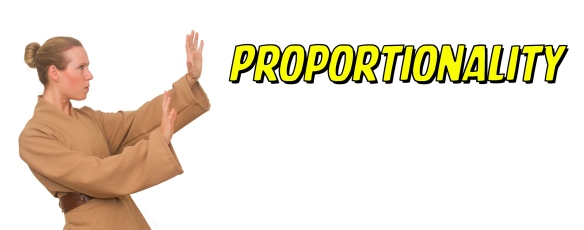The new Federal Rules of Civil Procedure are not as exciting as Star Wars The Force Awakens, but there differently has been an awakening on proportionality. There are those who fear eDiscovery, thus feel the new Rule 26 empowers them to object to every request for production on the grounds the request is not proportional to the merits of the case. Such thinking leads to the Dark Side. The new Rules are designed to bring balance to litigation, not leave it in tatters.
In a products liability and breach of warranty case involving evaporator coils and condenser coils in air conditioners, the Defendants as the Producing Party claimed producing responsive documents to the Plaintiffs’ request would be unduly burdensome. The Defendants claimed it would take “4,000 hours of lawyer review time over several months” to identify responsive discovery. Siriano v. Goodman Mfg. Co., L.P. (S.D.Ohio Dec. 9, 2015, No. 2:14-cv-1131) 2015 U.S. Dist. LEXIS 165040, at *15.
Magistrate Judge Elizabeth A. Preston Deavers engaged in very thoughtful analysis of Federal Rule of Civil Procedure 26(b)(1)’s new emphasis on proportionality in granting the Plaintiffs’ motion to compel, in part. As a preliminary matter, discovery is available “regarding any nonprivileged matter that is relevant to any party’s claim or defense and proportional to the needs of the case.” Fed. R. Civ. P. 26(b)(1).” Siriano, at *15.
Judge Deavers recounted the proportionality principles of former Fed. R. Civ. P. 26(b)(2)(C)(iii)), now Fed. R. Civ. P. 26(b)(1), that District Courts are to limit discovery where the “burden or expense . . . outweighs its likely benefit, taking into account the needs of the case, the amount in controversy, the parties’ resources, the importance of the issues at stake in the litigation, and the importance of the proposed discovery in resolving the issues.” Siriano, at *15-16.
As the Court noted, “restoring proportionality” was the “touchstone of revised Rule 26(b)(1)’s scope of discovery provisions” with the move of proportionality from Fed. R. Civ. P. 26(b)(2)(C)(iii)) to Fed. R. Civ. P. 26(b)(1). Siriano, at *16.
The Court’s analysis is very thoughtful, finding:
- The discovery sought by the Plaintiff was directly related to their claims for design and manufacture defects;
- It is highly unlikely that Plaintiffs could discover similar information from another source or in another manner;
- Documents pertaining to breach of warranty by other customers would be easily accessible to Defendants but likely inaccessible to Plaintiffs;
- It is more efficient for Defendants to provide information on their distributors, then the Plaintiffs construct it piecemeal with third-party request;
- Defendants expended relatively little in complying with discovery, because the information sought had been produced in related cases; and
- Plaintiffs in their Complaint present a putative class action that could include a significant number of class members who each purchased costly products from Defendants.
Siriano, at *16-19.
Harkening back to Yoda’s “size matters not,” just because something is expensive or time-consuming, does not mean it is unduly burdensome. Siriano, at *19.
The Defendants did not offer any alternative means of identifying or producing electronically stored information. Judge Deavers could have stated, “that is why you fail,” but instead wielded the new Federal Rule of Civil Procedure 1 like a lightsaber, hitting the Defendant with the fact that the “just, speedy, and inexpensive determination of every action and proceeding” is to be employed by not just the Court, but the parties under the new Rule 1. Siriano, at *19.
Under the new Rules, cooperation strikes back. Moreover, coupled with the return of proportionality, the new Rules contemplate “active judicial case management.” Siriano, at *19. Thus with the resolve to go to Dagobah, the Court ordered a discovery conference to discuss possibly conducting discovery in phases. Id. Finally, the parties were also directed to “engage in further cooperative dialogue in an effort to come to an agreement regarding proportional discovery.” Siriano, at *20.
Bow Tie Thoughts
eDiscovery might not be as popcorn worthy as Star Wars, but this is an excellent case applying the 2015 Amendments to the Federal Rules of Civil Procedure. The proportionality analysis is thoughtful in getting to the merits of the case. Judge Elizabeth A. Preston Deavers sets a great benchmark for others to follow in determining proportional discovery in cases.

